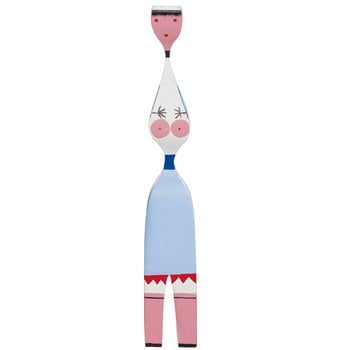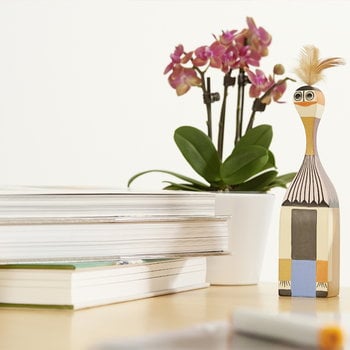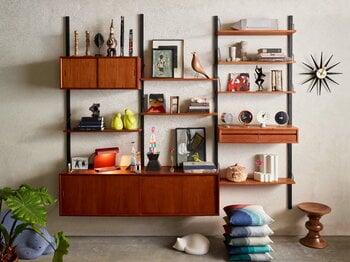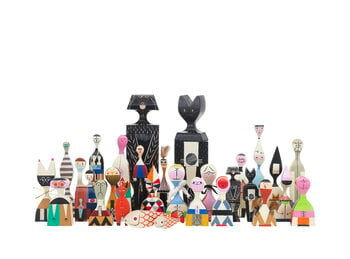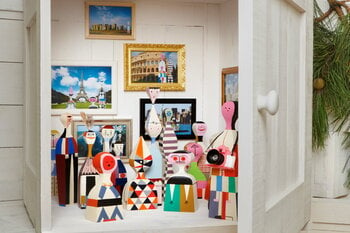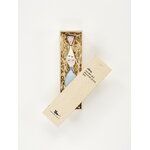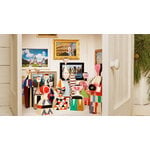Vitra’s Wooden Doll No. 7, designed by Alexander Girard, is a charming wooden figurine made from hand-painted fir. This unique wooden doll comes packed in an elegant wooden gift box.
In 1953 the American designer Alexander Girard created a collection of wooden dolls for his home in Santa Fe. Today, Girard’s colourful collection of wooden dolls is produced by Vitra. Inspired by Girard’s passion for South American, Asian and European folk art, the lovable wooden dolls can be used both as decorative items as well as toys.

